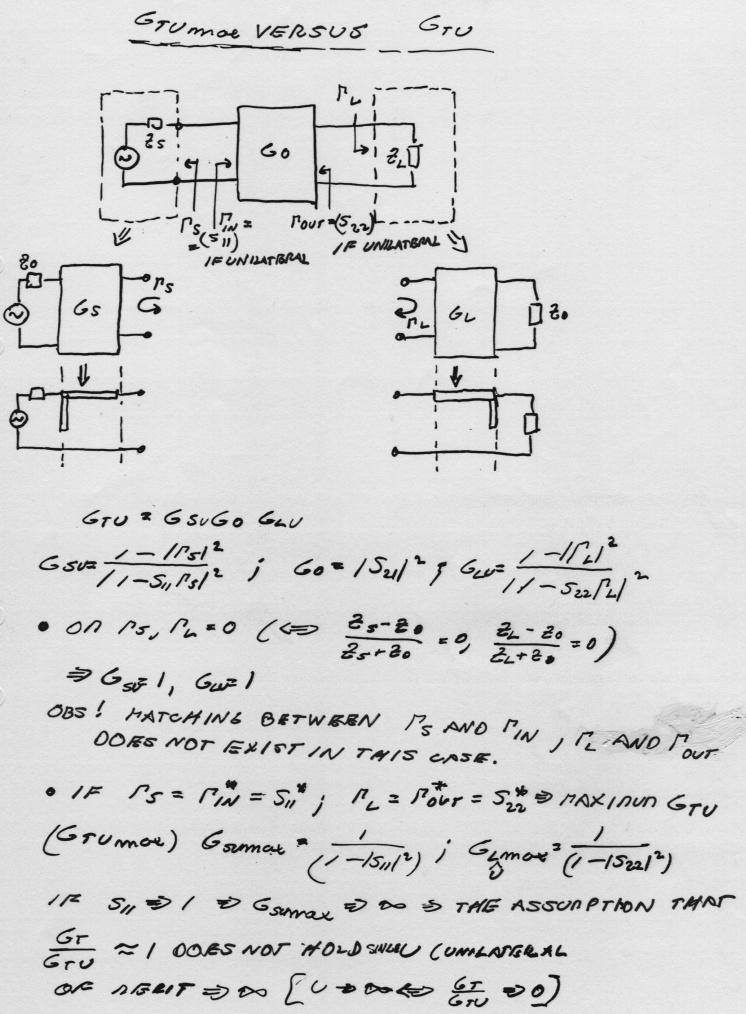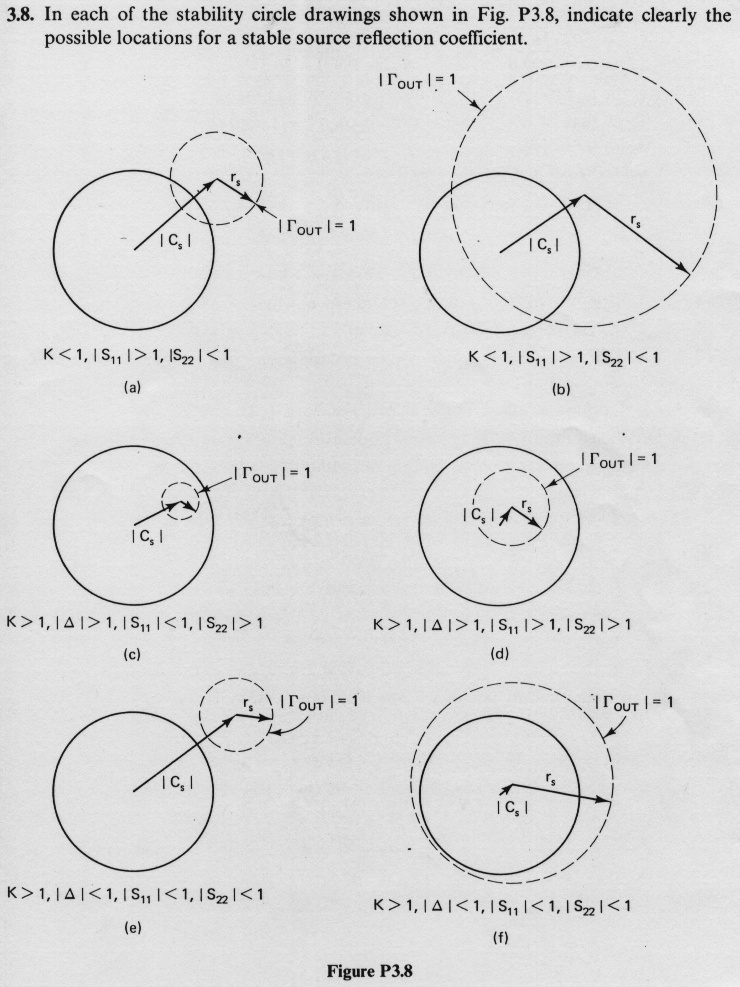
Microwave Engineering II
Lecture 3:Transducer gain and stability
Before we start to make designs we have to investigate a little more the equation for the transducer gain. We will show that we can split the equation into three different parts; the input, the device and the output part. This help us a lot for the future design work in understanding how the total power gain for e.g. an amplifier is put together.
In the first lecture we derived the frequency where the current gain became one. Since this frequency is of interest mainly for digital applications, we will also go through how we derive what is called the maximum frequency of oscillation (fmax) which represents the frequency where the power gain becomes one. In deriving the fmax we assume that the transistor is unilateral in the same way as we derived the ft in lecture 1. The fmax is an appropriate measure for analogue applications such as oscillators, amplifiers, mixers etc. From the equation of the power gain as a function of frequency we find that the fall of in gain is 20dB/decade which agrees with what we find for most microwave transistors. This general value can be used in a design of a transistor to extrapolate the gain at high frequencies.
The more we try to increase the gain for an amplifier the more the risk is that the amplifier that we have been working with turns into being an oscillator. This happens when we have a to large positive feedback between the input and the output of the device, and thus the gain becomes to large for the amplifier to still have a stable operation. In this lecture we will learn how to figure out what load impedance's or region of impedance's on the output or input of the device that will create problems in the stability of the device, using the Smith-chart.
To study:
Textbook pages: 611-617.
Below are some explanations on Gtumax versus Gtu.
Observe that Gs=0 and Gl=0 means only that we have match between Zs and Zl and the load Zo. In order to have maximum Gs and GL we need to have a match between Gs and Gin, and GL and Gout respectively.

To understand:
Important equations:
Examples:
Example 11.2 in Pozar is solved during the lecture. As homework you can try example 11.2 from the Problem section in Pozar.
Try also example 3.8, see below. We will go through the solution in the lecture.
